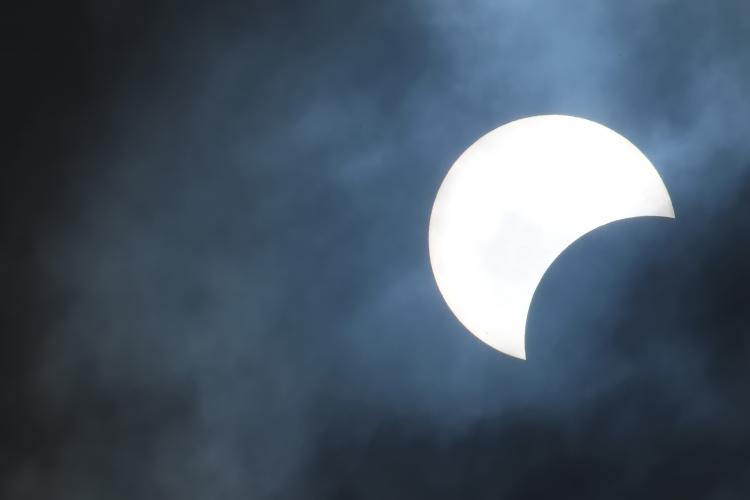In the context of solar eclipse which we are going to observe on the new moon day of 26 December 2019, this article aims to enlighten the facts and debunk a few misconceptions that are prevailing around our societies. The eclipse would be observed as the partial eclipse from parts of Kathmandu, starting at 8:43 am in the morning and ending at 11:31 am, with the peak at 10:01 am. The two-hour-and-48 minute eclipse will obstruct 48% sun as we view from here.
It is said that to minimize the negative impact, Socrates had once suggested to see solar eclipse through the reflection in water because the impact of watching solar eclipse directly would be harmful for eyes. Later a story tells us how Galileo’s eyes were affected by watching the eclipse through binoculars. In some communities as a part of their religious tradition and worship of the Sun God, there are plenty of evidences of baleful effects faced by many such people who witnessed the Sun God. It was for the first time in the 18th century the evidence was found about the harmful effects on eye caused by watching solar eclipse.
The effects of solar eclipse on eyes specially depend upon the amount of radiation and the duration of solar exposure. Although nobody has concretely stated about the actual process as to what happens in causing such effects but this is for sure that this entails heat induced photo-chemical process. The ultra-violet rays affect skins (red blisters or carcinogenic effects), its heat affects retina and incites many other problems. Only partial solar eclipse can be viewed with naked eyes for a few seconds. But total solar eclipse—which can be seen on this day of 26 December—is never safe to watch with naked eyes. Even at the time when 99% of the sun is covered by the moon, it is not safe to watch it without precautionary measures; this is because the harmful rays coming from the remaining 1% of the sun, especially affects the outer layer i.e. cornea of our eyes. The wavelength of these rays is short and cannot penetrate the cornea. In some cases epithelium comes off but later it grows again. Generally the culprits for noxious effects to the eyes are the rays whose wavelengths are less or near those of ultra-violet rays.
The actual effect may not be evidenced during clinical examination from 24-48 hours. But vision starts to diminish gradually from the first or second day. There may be partial improvement in a month or two. However, a black spot (central scotoma) in the middle of the visual field shall always remain; this is due to the permanent and irreversible damage to the center of the retina. The condition is called solar maculopathy. Hence, it should be noted that we cannot view the ecliptical sun simply because we belong to certain signs of zodiac or horoscope, as proclaimed by so-called astrologers.

There can be a curiosity among plebeian that why it is more harmful to watch Sun during the time of solar eclipse than any other time. The first reason is at the time of eclipse the sun is blocked by the moon and for the time being, there is darkness all around. At this time the pupil of our eyes are dilated and suddenly when some portion of the Sun becomes visible many harmful rays enter into our eyes through the enlarged pupil that even penetrates into the parts of retina. In a normal day this is not possible because the Sun is so bright that we cannot look at it. Even we improvise to look, the pupils are so constricted that only few rays of light would enter causing inconspicuous effect.
Similarly, at the time of the eclipse, the earth, the moon and the sun befall on the same plane in a straight line causing the gravitational pull of each of the celestial bodies to combine. As a result, harmful rays, which would otherwise scatter in any other direction in space, are streamlined to precipitate to the Earth. Hence the effect is multiplied than on a normal day. Radons are among many in the bundle of those harmful rays, which can easily set in damp or wet materials for a relatively longer period of time. So, we can say there are some scientific grounds for an old belief that water and food items exposed to the eclipse should not be consumed.
All scientific papers suggest that watching eclipse is harmful but if one has to watch it then use of protective filters like Eclipse Shades or aluminized polyester are advised. There are also commercially available filters designed specifically for eclipse view. The main solution is, of course, not to watch; if you must then use safety measures before watching. It is heard on the grapevine that looking through a medical x-ray film, photo’s negatives or polarizing spectacles would save eyes from those harmful rays, which all are not true. None of these techniques are 100% risk proof. Public awareness would be a more effective strategy to minimize the harm caused by eclipse gazing.
Click here to get to the online link of this article at The Himalayan Times.
For a more detailed video :
Turn on the closed captions (CC) in youtube.





0 Comments